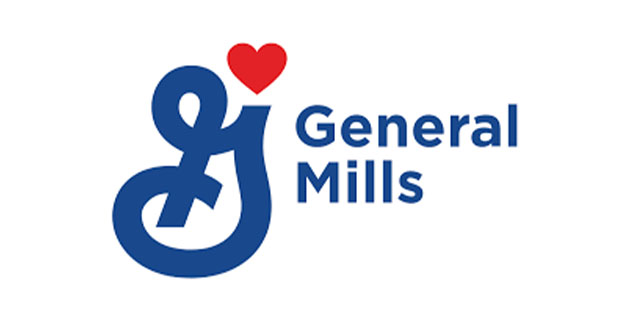New Survey Uncovers Lessons for Selling Services—and Success—to an Increasingly Multicultural America
Latest Press Release
The 2020 Census marked a turning point toward a multicultural America: While (non-Hispanic) White Americans still accounted for a majority—61.6 percent—of the US population, population growth over the previous decade was fueled nearly entirely by non-White minority groups, with Hispanic/Latino Americans alone accounting for more than half of growth between 2010-20.
“More than half of America’s youth now identify as non-White,” said Ivan Pollard, Center Leader, Marketing & Communications at The Conference Board. “But this doesn’t mean ethnicity—or any one facet of demography—is destiny. To the contrary, brands succeed by grasping the complex intersection of race, ethnicity, age, gender, income, and more that define consumer identity—and shape consumer choices.”
Enter the latest research in The Conference Board Multicultural Consumer Survey series. To understand How Ethnic Identity Reflects In Purchases of Services, the project surveyed 2,000 multicultural US households to uncover their attitudes, preferences, and consumption behaviors—including considerations regarding identity expression and sustainability in travel decisions. It is the second in a series of multicultural consumer surveys, following 2021’s comprehensive report on goods.
“The data we gathered provide insights for how every business needs to think about engaging their customers in a demographically diverse America,” Pollard added. “In the realm of services, these diversifying attitudes impact everything from travel plans and leisure activities to restaurants, healthcare, financial services, education, childcare, pet care, fitness, and more—including the online and brick-and-mortar shopping channels.”
Findings from this latest research are featured in an overview report,Multicultural Consumer Survey: Services, and its accompanying deep dive on Closing US Financial Services Gaps. Among the key insights:
- The rise of commerce as an expression of identity. Growing cohorts of Americans are likely to use services to express their ethnic identity, especially higher-income Black and Latino consumers and people under 35 across all minority groups (with the money to spend). This leaves businesses across a broad swath of service sectors—including not only digital media, restaurants, travel, personal care, and out-of-home-entertainment, but also education and fitness, among others—well positioned to consider refining their customer experiences to fulfill their multicultural audiences’ desire for ethnic expression.
“In this age of self-expression, brands with a committed, comprehensive diversity strategy can tap into consumers’ desire to express their ethnic heritage through their purchases,” said Denise Dahlhoff, Senior Researcher at The Conference Board. “This can help brands reach younger consumers in particular, including those from traditionally less self-expressive cultures that are US-acculturated and even younger White people who, surrounded by diverse peers, seem inspired to express their own cultural identities.”
- Spending on symbols of success is universal—but defining success varies. Spending on services—including on education and financial investments—may be partly be driven by what consumers consider success in life. Yet no definition of success is universal. For example, for Latino consumers, owning a home and business, and sending their children to college signifies success more than it appears to for other consumer segments. For Asian consumers, who generally skew toward higher income groups, financial achievements are relatively more important. This reflects in their higher use of banking, investing, insurance, and financial advisory services compared to other groups.
- Financial services gap. As explored in our deep-dive report on financial services,low- and middle-income Black and Hispanic respondents are generally more likely to use various forms of nontraditional financial services compared to their Asian and White peers of similar income levels. These nontraditional services—from payday loans to crypto currencies—often entail substantial risks.
“Financial services providers have significant room to grow their engagement with Black and Latino consumers—even among higher-income consumers in these groups,” said The Conference Board Chief Economist Dana Peterson, “For financial institutions, closing these gaps can mean reaching a lucrative market currently untapped by banking services.”
- Non-White Americans, especially those in higher income groups, express most interest in environmentally friendly transportation for travel, as well as accommodations—offering travel companies a well-defined target for sustainable options. Generally, higher-earning consumers within a given racial and ethnic group are more open to sustainability appeals than their lower-earning counterparts.
- What consumers value most about offline and online shopping differs by age, income, and ethnicity. Such insights can help retailers finetune their channel design, targeting, and messaging. For example, for younger shoppers, brick-and-mortar stores offer a forum to socialize, while older shoppers mostly value stores’ traditional advantages of inspecting products in-person and instant acquisition of items.
The ability to save time by shopping online appeals particularly to Latino and Asian shoppers. The entertainment aspects of a physical store are more likely to appeal to the Latino segment as well as younger White shoppers, and the ability to socialize with family/friends appeals to Black shoppers overall as well as generally younger, especially non-White consumers. These preferences may also be related to other factors such as location of residence and family status.
About The Conference Board
The Conference Board is the member-driven think tank that delivers Trusted Insights for What’s Ahead®. Founded in 1916, we are a non-partisan, not-for-profit entity holding 501 (c) (3) tax-exempt status in the United States. www.conference-board.org.
For further information contact:
Jonathan Liu
jliu@tcb.org











